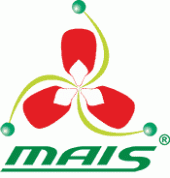News
23.03.2017
How to breed young stock was discussed by AgriSchool in Myrhorod

On 22 and 23 March the second module of AgroSchool ‘Management of Dairy Business concerning Young Stock Breeding’ was held in Myrhorod town. The module involved theoretical and practical sessions as well as site visit to production facilities of the LLC ‘Vitchyzna’ in Sumy region.
During theoretical and practical sessions nearly 30 participants discussed issues regarding increasing of productivity of dairy cattle with application of genetic and breeding methods, herd reproduction, young stock growing from the first day of life to the first pregnancy as well as diseases affecting respiratory, reproductive and digestive systems.
Volodymyr Fychak Director of the PE “Genetics and Selection’ during the first theoretical and practical sessions informed about ways to improve productivity of dairy cattle by virtue of genetic and breeding methods. The expert from his practical experience told about new numonitoriy technology that is useful in managing reproduction of the herd. It is a special neck strap keeping records of the cow activity, feed intake and other parameters. This device controls cows and helps with artificial insemination.
Volodymyr Fychak also focused on the issue of bulls’ selection: ‘Today we are applying the MAP American program, with its help we are recording data on sires. In 2016, more than 1 million animals were estimated worldwide. The program selects itself the most appropriate bull for cow according to the relevant parameters. Proper selection of the sire will increase productivity in each successive generation by 500-1,500 kg of milk per lactation, improve animal health and prolong their period of use’.
According to the expert, application of modern methods for accelerating breeding such as use of sexed sperm affects economic efficiency and enables to receive UAH 30 thousand of net profit from each heifer owing to ease of calving, reduction of stillbirth, postnatal uterus complications and uterus service period as well as increase of daughters’ productivity.
The next session was devoted to growing young stock from the first day of life to the first pregnancy. Oleksiy Ivannikov, Doctor of Veterinary Science, Cattle Technical Support Specialist of Trouw Nutrition Ukraine, spoke about importance of maintaining calves from 0 to 2 months: ‘If we do not give enough attention to calf within this period of time, it will lead to long terms of insemination and result in loss of quarter of all milk’.
As explained by Mr. Oleksiy, development of gastrointestinal tract of the calf affects its future productivity: ‘90% of cattle disease, i.e. cow diseases depends on unbalanced operation of rumen. Gradually, rumen becomes the main source of nutrients for animal. For its normal development three kinds of food are necessary: water, roughage and starter ration for calves’.
Among measures to be taken during the first two months after birth Mr. Oleksiy named early training of calves to consume dry mash, from 3rd – 4th day of life - limited scheme of milk feeding for calves - only 200 - 250 liters, training to consume silos and haylage from 9 weeks old.
Following implementation of young stock breeding program, the farms experience increase of prime cost of weight gain by 15 - 50% as well as decrease of digestive problems of animals.
Ruslan Polonskyi, Veterinarian of Zoetis Company told how to raise healthy young stock without pathologies and diseases affecting respiratory, reproductive and digestive systems.
Diseases that affect reproductive and respiratory systems are common infectious diseases such as parainfluenza 3, leptospirosis, viral diarrhea, virus sentytsialna disease. These diseases have a negative impact on the efficiency of cows. In order to prevent their spreading, it is necessary to arrange farm business properly and not rely only on the vaccine. Such measures should include technology of maintenance, feeding and rearing subject to microclimate and veterinary schemes.
The speaker shared practical experience and told about drugs that are better in treatment and preventive measures. Mr. Ruslan also advised on metaphylaxis measures by means of which farmers can influence both sick animals and those that are in threatening area.
Within the module, there was a site visit to a high-tech milk production farm ‘Vitchyzna LLC’ in Sumy region where a professional tour around the company was held. In 2014, LLC ‘Vitchyzna’ put into operation the first order of reequipped farm for 500 heads of dairy cattle. Modernization envisioned arrangement of milking parlours ‘Р2100 2х10’ fitted with ALPRO program for herd management, ERS-120-C heat recovery system, DSG2 sorting gates, ACD100 scraper manure removal system, K3 press for manure, stall dividers, HLS10 feed fence, EP400 pump, ventilation shafts, curtains for cow sheds and driving galleries as well as pendulum-type brushes for cows.





































































































































































